#online teaching digital board
Text
Importance of Digital Board for classroom learning
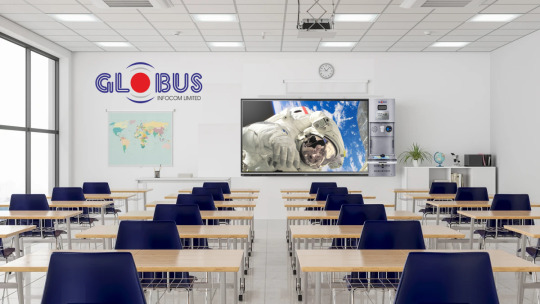
In this fast-changing world, both the role of schools and teachers are rapidly transforming. Many EdTech brands have developed effective learning software and applications to support students’ development inside the classroom. Digital learning platforms create learning experiences that encourage students to actively participate and learn available educational content. These online learning platforms are used to create an engaging learning environment for students and offer personalized lessons for each student supporting self-paced learning.
Today, resources that aid teachers in grabbing and holding learners’ attention are essential. Low students engagement is the most common problem faced.
Smart boards, often known as digital boards for teaching, make teaching easier by enhancing student learning. They enable teachers and students to work together to study, share files, use instructional software and access online resources.
Here are the top five benefits of using smart boards in the classroom and how they may help every student.
1. Increase student involvement
Researchers claim that because of the available K–12 content today, students are turning into digital natives, and they learn more effectively. Solutions for easy-to-use, scalable, and secure displays provide teachers more power over the curriculum. Teachers may design more engaging lessons by writing or typing on digital boards, drawing attention to subjects with highlights, circles, arrows, or zooming in—as well as sharing multimedia information like videos, webpages, presentations, and photographs. Even numerous parts of the digital board for teaching can be created so that multiple students can use it effectively and simultaneously.
2. Accommodate many learning modalities
An interactive whiteboard is helpful for all types of learners, ensuring better audio-video experiences. Learners can hear multimedia content, also hands-on the board, and write on it with a stylus or even just their fingers. Visual learners benefit from a 4K UHD screen, like the one on Globus digital boards. The smart board can be used for one-on-one interaction with learners or for educating small groups of students arranged according to learning preferences.
3. Lessons saved, shared, and sent
K–12 instructors were already setting aside some of their time to make learning easily available for children who were absent due to illness before COVID-19. However, teachers can now utilize a digital board to take screenshots of their teachings, preserving them quickly by even recording, and sharing them with the entire class as well as any other colleagues who might require them. There are countless alternatives for content. Teachers can construct review materials for students to use at home or save their own notes so they can take up where they left off.
4. Make the classroom accessible to everybody.
Digital boards for teaching make it simpler for teachers to include students via video-conference technology, whether some or the entire class is learning remotely. There is no requirement to install any unique cameras. Students who are at home can participate in class discussions and observe everything the teacher does. This not only makes hybrid learning possible but also promotes it.
5. Encourage learner’s success
Students who used digital boards to learn performed noticeably better and engage better through it rather than the traditional method of learning. Students get inclined easily toward visual learning and thus "visual materials, paintings, symbols, and screen designs improve learning and increase learning persistence."
Schools that are digitalizing their classrooms with digital learning solutions are investing in their students making them future-ready and preparing them for a better tomorrow.
#interactive digital board price india#digital board for education#digital Board solution#digital board for teaching#digital Board#digital display board#digital board price list#digital board for teaching online#smart board for online teaching#digital board for online teaching#digital display board software#digital board for online teaching price#online teaching digital board#best digital board for online teaching#digital smart board for online teaching#digital board for schools#digital board software for online teaching#digital whiteboard for online classes#All in one digital board for teaching#All in one digital board for schools
0 notes
Text
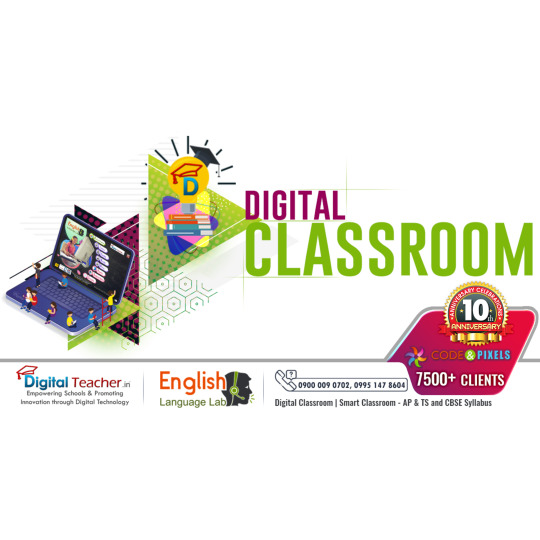
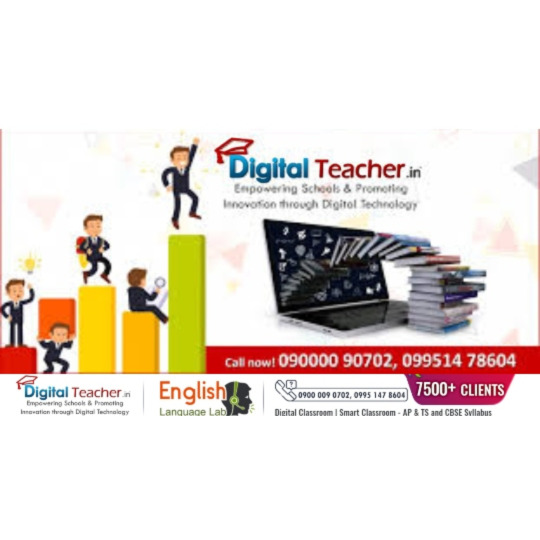
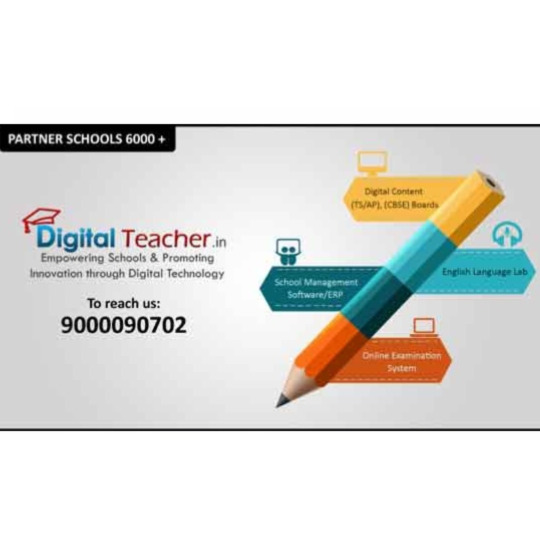
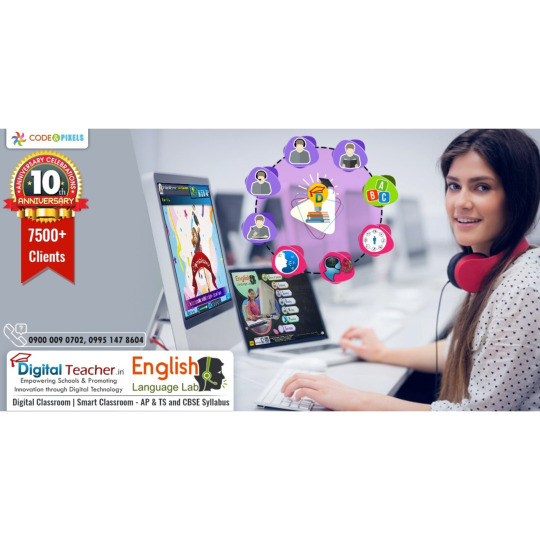
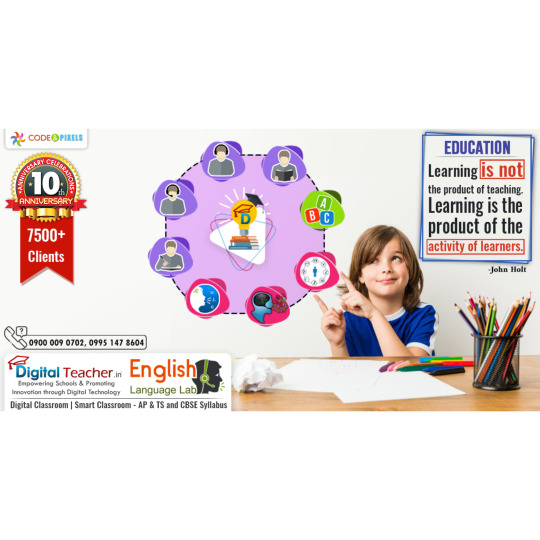
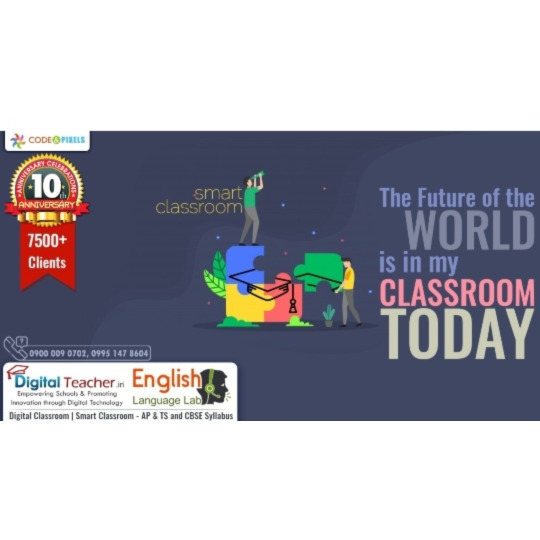



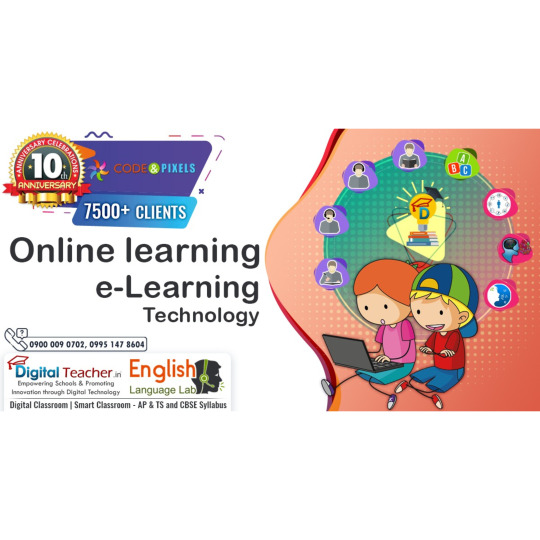

Digital class boards integrated with digital classroom software help to expand the nature of the content with support of illustrations, graphs and animation
#digi class#digital class#digital class board#digital classroom#digital classrooms#making notes#Online resources#Online videos#computer based teaching#digital classroom software#code and pixels#digital content#digital india#digital solutions#digital teacher#elearning solution providers#english lab#english language lab#language lab#simulation based learning#smart classroom#smart classroom solution#smart classrooms#smart class#the learning app#elearning app#digital teacher app#digital teacher learning app#digital teaching tools#elearning solutions
2 notes
·
View notes
Text
Can't afford art school?
After seeing post like this 👇

And this gem 👇
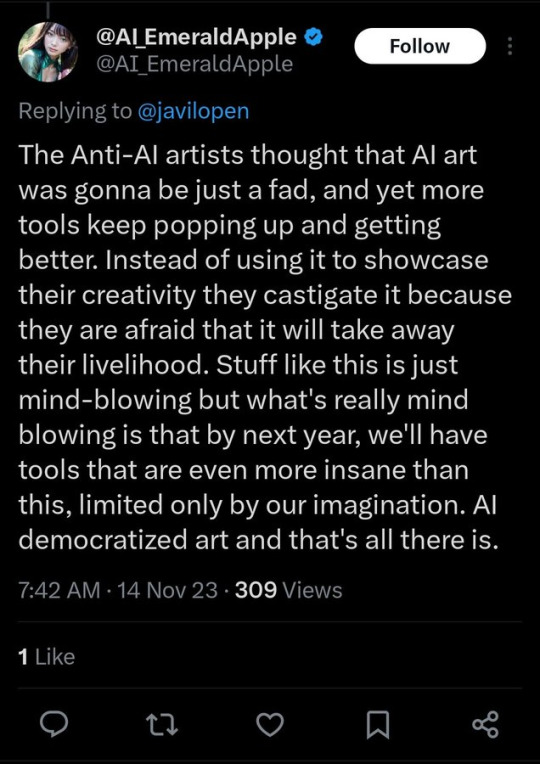
As well as countless of others from the AI generator community. Just talking about how "inaccessible art" is, I decided why not show how wrong these guys are while also helping anyone who actually wants to learn.
Here is the first one ART TEACHERS! There are plenty online and in places like youtube.
📺Here is my list:
Proko (Free, mostly teaches anatomy and how to draw people. But does have art talks and teaches the basics.)
Marc Brunet (Free but he does have other classes for a cheap price. Use to work for Blizzard and teaches you everything)
Aaron Rutten (free, tips about art, talks about art programs and the best products for digital art)
BoroCG (free, teaches a verity of art mediums from 3D modeling to digital painting. As well as some tips that can be used across styles)
Jesse J. Jones (free, talks about animating)
Jesus Conde (free, teaches digital painting and has classes in Spanish)
Mohammed Agbadi (free, he gives some advice in some videos and talks about art)
Ross Draws (free, he does have other classes for a good price. Mostly teaching character designs and simple backgrounds.)
SamDoesArts (free, gives good advice and critiques)
Drawfee Show (free, they do give some good advice and great inspiration)
The Art of Aaron Blaise ( useful tips for digital art and animation. Was an animator for Disney. Mostly nature art)
Bobby Chiu ( useful tips and interviews with artist who are in the industry or making a living as artist)
Sinix Design (has some tips on drawing people)
Winged canvas (art school for free on a verity of mediums)
Bob Ross (just a good time, learn how to paint, as well as how too relax when doing art. "there are no mistakes only happy accidents", this channel also provides tips from another artist)
Scott Christian Sava (Inspiration and provides tips and advice)
Pikat (art advice and critiques)
Drawbox (a suggested cheap online art school, made of a community of artist)
Skillshare (A cheap learning site that has art classes ranging from traditional to digital. As well as Animation and tutorials on art programs. All under one price, in the USA it's around $34 a month)
Human anatomy for artist (not a video or teacher but the site is full of awesome refs to practice and get better at anatomy)
Second part BOOKS, I have collected some books that have helped me and might help others.
📚Here is my list:
The "how to draw manga" series produced by Graphic-sha. These are for manga artist but they give great advice and information.
"Creating characters with personality" by Tom Bancroft. A great book that can help not just people who draw cartoons but also realistic ones. As it helps you with facial ques and how to make a character interesting.
"Albinus on anatomy" by Robert Beverly Hale and Terence Coyle. Great book to help someone learn basic anatomy.
"Artistic Anatomy" by Dr. Paul Richer and Robert Beverly Hale. A good book if you want to go further in-depth with anatomy.
"Directing the story" by Francis Glebas. A good book if you want to Story board or make comics.
"Animal Anatomy for Artists" by Eliot Goldfinger. A good book for if you want to draw animals or creatures.
"Constructive Anatomy: with almost 500 illustrations" by George B. Bridgman. A great book to help you block out shadows in your figures and see them in a more 3 diamantine way.
"Dynamic Anatomy: Revised and expand" by Burne Hogarth. A book that shows how to block out shapes and easily understand what you are looking out. When it comes to human subjects.
"An Atlas of animal anatomy for artist" by W. Ellenberger and H. Dittrich and H. Baum. This is another good one for people who want to draw animals or creatures.
Etherington Brothers, they make books and have a free blog with art tips.
📝As for Supplies, I recommend starting out cheap, buying Pencils and art paper at dollar tree or 5 below. If you want to go fancy Michaels is always a good place for traditional supplies. They also get in some good sales and discounts. For digital art, I recommend not starting with a screen art drawing tablet as they are usually more expensive.
For the Best art Tablet I recommend either Xp-pen, Bamboo or Huion. Some can range from about 40$ to the thousands.
💻As for art programs here is a list of Free to pay.
Clip Studio paint ( you can choose to pay once or sub and get updates. Galaxy, Windows, macOS, iPad, iPhone, Android, or Chromebook device. )
Procreate ( pay once for $9.99 usd, IPAD & IPHONE ONLY)
Blender (for 3D modules/sculpting, animation and more. Free)
PaintTool SAI (pay but has a 31 day free trail)
Krita (Free)
mypaint (free)
FireAlpaca (free)
Aseprite ($19.99 usd but has a free trail, for pixel art Windows & macOS)
Drawpile (free and for if you want to draw with others)
IbisPaint (free, phone app ONLY)
Medibang (free, IPAD, Android and PC)
NOTE: Some of these can work on almost any computer like Clip and Sai but others will require a bit stronger computer like Blender. Please check their sites for if your computer is compatible.
So do with this information as you will but as you can tell there are ways to learn how to become an artist, without breaking the bank. The only thing that might be stopping YOU from using any of these things, is YOU.
I have made time to learn to draw and many artist have too. Either in-between working two jobs or taking care of your family and a job or regular school and chores. YOU just have to take the time or use some time management, it really doesn't take long to practice for like an hour or less. YOU also don't have to do it every day, just once or three times a week is fine.
Hope this was helpful and have a great day.
"also apologies for any spelling or grammar errors, I have Dyslexia and it makes my brain go XP when it comes to speech or writing"
58K notes
·
View notes
Text
youtube
How to Find a ODM/OEM Interactive Flat Panel Supplier?
Finding a suitable ODM (Original Design Manufacturer) or OEM (Original Equipment Manufacturer) for interactive flat panels involves several steps.
Here's a guide to help you through the process:
1. Define Your Requirements.
- Specifications: Determine the specifications you need, such as screen size, resolution, touch technology (capacitive, optical, etc.), and additional features (e.g., compatibility with various operating systems, connectivity options).
- Design: Consider any custom design or branding you require.
- Quantity: Estimate the volume of your initial order and future orders.
2. Research Potential Suppliers
- Online Platforms: Use B2B platforms such as Alibaba, Global Sources, or Made-in-China to find suppliers. Check their product offerings and request quotes.
- Industry Associations: Look for manufacturers listed in industry-specific associations or trade directories.
- Trade Shows: Attend trade shows related to electronics, AV technologies, or educational technology, where you can meet potential suppliers in person
3. Evaluate Suppliers
- Company Reputation: Research the supplier's reputation through online reviews, testimonials, and references.
- Certifications: Ensure the suppliers have necessary quality certifications (ISO, CE, RoHS, etc.) that meet your region's regulatory requirements.
- Experience: Check how long the supplier has been in business and their experience with interactive flat panels.
4. Request Samples
- Before making a large order, request samples to test the quality, performance, and functionality of their products.
5. Assess Communication and Support
- Responsiveness: Evaluate how promptly and effectively they respond to inquiries.
- Language Barrier: Ensure that language is not a barrier in communication.
- Customer Service: Assess their customer service quality for post-purchase support.
6. Negotiate Terms
- Discuss pricing, minimum order quantities, lead times, payment terms, and warranty options.
- Make sure to get everything in writing.
7. Verify Production Capabilities
- If possible, visit the factory to assess their production lines, quality control processes, and capacity.
- Ensure they have the capability to scale production as your business grows.
8. Evaluate Logistics and Shipping
- Discuss shipping options, costs, and timelines. Consider the implications of customs regulations if sourcing from overseas.
9. Legal Considerations
- Draft and review contracts carefully to protect your intellectual property and ensure quality standards.
10. Build a Relationship
- Once you find a suitable supplier, work on developing a strong business relationship to facilitate better communication and cooperation in the long run.
Additional Resources:
- Industry Reports: Consult market research reports for insights into industry trends and key players in the interactive flat panel market.
- Networking: Leverage professional networks and forums to get recommendations and insights from others in the industry.
By following these steps, you should be able to find a reliable ODM/OEM interactive flat panel supplier that meets your needs.
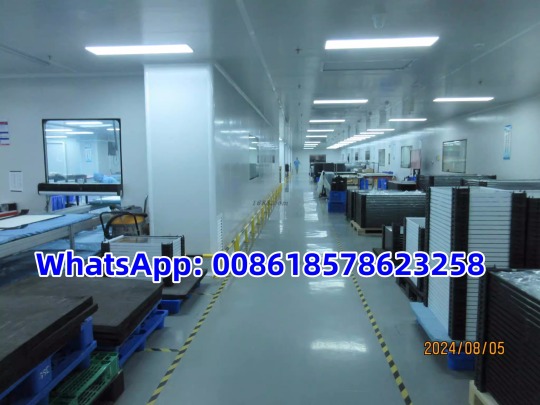
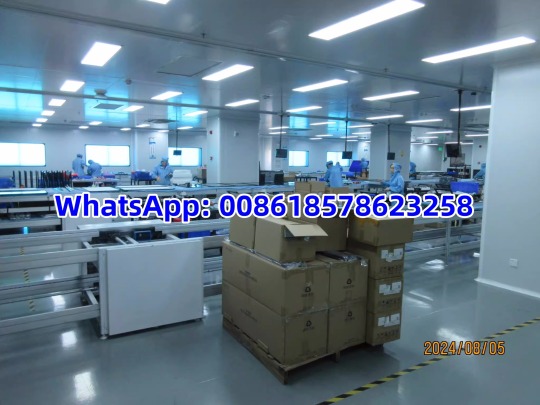
#budget digital board 2024#budget smart board 2024#smart board#low cost interactive whiteboard#cheapest interactive flat panel#cheap smart board 2024#best digital whiteboard for teaching#smart board for online teaching#best smart class solution#smart board with ops#Interactive Flat Panel#ifp#smart board for teaching#smart board projector#interactive touch board#interactive flat panel#interactive whiteboard#top 5 best interactive smart board#Interactive Displays#Youtube
1 note
·
View note
Text
#coaching#online coaching#online teacher#online tutoring#teacher#teaching#tutor#digital board#studio setup#home studio setup#Evota smart board#best studio provider#best studio provider in India#online teaching Studio setup#evota camera
1 note
·
View note
Text
Exploring Augmented Reality Board Games: Enhancing the Gaming Experience
Augmented reality board games represent an exciting frontier in gaming, offering a unique blend of physical and digital interaction that appeals to players of all ages. With continued advancements in AR technology and creative game design, the possibilities for immersive and engaging gaming experiences are endless. Whether hunting for treasure in their own backyard or saving the world from ghosts in their neighborhood, players can look forward to a new era of interactive entertainment with augmented reality board games.
0 notes
Text

Scarleteen’s fourth digital pride is happening on Friday, June 28th! We're in an extra-super-mega celebratory mood this Pride month because we're in the midst of our 25th anniversary year!
We know that in-person Pride celebrations aren’t accessible or don’t feel safe for everyone, whether that’s because of disability, lack of transportation, or because it’s just not, or doesn’t yet feel, safe for someone to be out in their community. We do a digital Pride every year for many of the same reasons we exist as an online service. While online services aren’t accessible to everyone either, they widen the net substantially, especially for young people, people with disabilities, and rural people, and tend to feel especially safer for folks who want to talk, ask or read about things like sex, sexual identity, sexual health and relationships outside the box, subjects it just isn’t safe to ask just anyone about.
Just like we have during all of our quarter century as an organization and service, we’re focusing this year’s digital Pride on Queer Care. Queer care is the backbone of so much of queer history, culture, and community. We hope you'll join us for music, digital community resource sharing, mini-histories, and AMAs with our queer and trans/gender-nonconforming staff on our sub-reddit and our message boards!
We're inviting anyone who's curious to come by any of our real-time direct services — our boards, text service and live chat — on the 28th, too. Want to experience the kind of education and support our users receive? Get help as a parent or caregiver? Maybe you’re a sex or general educator yourself who wants to find out more about what we do and how we do it, or get help finding some of our content for your own teaching. You can also pop into any of our services just to say hi! Our message boards and text line are always open 24/7, but for Pride, our live chat service will also be open and available all day long!
Happy Pride month, everyone! We hope you’ll join us at the end of it!
6 notes
·
View notes
Text
FIRST ON FOX: The former Missouri teacher who resigned after school administrators found out about her OnlyFans account told Fox News Digital she's made close to $1 million selling porn.
Brianna Coppage, 28, was an English teacher at St. Clair High School, about an hour outside of St. Louis, and was placed on leave before ultimately resigning once administrators discovered her racy side hustle.
Coppage, who made $42,000 working as a teacher, said she used OnlyFans to make extra money that would help her pay off student loans from her advanced degrees.
"I started it, one, to just supplement my income and kind of see what happens and possibly make extra money. Like, I have student loans. I was working on my third degree. So, I also have a master's degree in education, and then I was working on my specialist degree," Coppage told Fox News Digital in an interview.
Coppage was placed on leave in September after meeting with two school administrators who received reports about her OnlyFans account.
"They specifically said they got a report from an adult in the Sullivan School District, and they asked, do I have any other income streams like outside of teaching? And I said, ‘Yes, I do have an OnlyFans.’ They asked how long I had been doing it, if it was during my own time or … anything at school, which I told them."
Coppage said her work on OnlyFans was "completely separate" from her professional life at school.
Kyle Kruse, superintendent of the school district, previously told Fox News Digital administrators were "recently notified that an employee may have posted inappropriate media on one or more internet sites."
"The district has engaged legal counsel to conduct a comprehensive investigation into this matter," Kruse said. "Actions taken as a result of the investigation will be in accordance with board policy and with guidance from legal counsel."
Coppage said she's now among the platform's top creators, raking in nearly $1 million since she began the account over the summer.
"I will also say that I have tens of thousands of fans now. And I have, you know, far exceeded my teacher salary for the year," she said.
The former high school teacher added that if given the opportunity she'd do it again.
"I don't regret it. I still strongly feel that. People are allowed to have personal lives outside of their career. And I've seen a lot of comments like, 'Well, what if the students found it or it's online? People are going to see it.'
"And I don't necessarily disagree with that," she said. "I know for a fact that, one, students are not the ones who found it. They're not the ones who reported it. And they didn't see it until adults posted my link in a community group."
#nunyas news#start saving for retirement#this isn't going to last#and you're going to have a tough time#getting another job now
17 notes
·
View notes
Text
6 major advantages of digital boards for classrooms

The new learning method that is being encouraged in schools across the country is digital boards in the classroom. These digital boards for teaching are replacing the existing traditional method of learning and enable students to learn with audio-visual content supporting both personalized learning as well as encouraging students’ participation for better results.
Discussed below are some of the advantages of Digital Boards
Engaging sessions enhancing participation
Students find lessons to be very interesting. Different research has proven that students learn better when they learn visually. It has also helped in developing retention rates amongst students in a better way. Teachers are also finding digital boards in the classroom to be the best and most effective medium for teaching where students are eager to come to the classes and enjoy the sessions with the available multimedia content.
Accessibility to the external resources
Access to a wide and relevant range of educational resources online. With the different resources for the same concept, students get multiple ways of solving questions, learning concepts, and different methodologies ensuring their growth. Digital boards for online teaching thus create an easy and approachable platform for teachers so that they can utilize available resources in explaining their sessions. The use of relevant videos provides enriched learning experiences with audio-visual learning.
Ensure more attentiveness in the classrooms
Digital learning solutions in the classroom help students increase attention to what’s being taught in the classrooms. Students can easily access the notes and save them with the available recording options to refer to later. Which ensures never to miss classes and also notes. Saving time from writing thus enables students to focus more on improving productivity.
Enriched learning experiences
These digital boards for schools are transforming complete learning methodologies of the classrooms creating a better learning ecosystem. The available multimedia content, effective assessment methods, different quiz tools, and screen-sharing options enhance maximum participation and audio-visual learning allowing learners to get to the concepts easily ensuring their academic excellence.
Option for multi-finger touch
Interest in teaching can be achieved with multiple-finger touch recognition with senses. Writing using a dual-tip point stylus enable annotation on the text to give students to mark important points, create explanatory remarks, helping them focus and pay attention in class. The multiple-finger touch option allows the palm to erase written things on displays.
Enables students to work together
The ability for students to simultaneously draw and write on the same board inspires creativity and transforms a regular classroom into a collaborative one.
Teaching can be more fluid for both the teacher and the students in a classroom with interactive digital boards. Without ever having to worry that the classes aren't dynamic enough, teachers may always come up with fresh and interactive methods to use digital boards.
#Digital Board#digital board for teaching#digital board for education#interactive digital board price india#digital board for online teaching#digital board for teaching online
0 notes
Text
Printed Circuit Board Basics
Most of us are using Printed Circuit Board in our daily life. Printed Circuit Boards are used in almost all the Electronic products, from consumer gadgets such as PCs, tablets, smartphones, and gaming consoles to industrial and even high tech products in strategic and medical electronics domains.
Here, we have some statistics for you that shows how many electronic devices connect worldwide from 2015 to 2025. This statistic shows an increase in the use of a number of PCB in people daily life. Hence, CircuitWala took this opportunity to provide a basic knowledge about PCB via this article.
There are so many books available online which teach about Printed Circuit Board design and hardware part. There are few links available online which shows only a few basic fundamentals of PCB and few are there for Basics of Printed Circuit Board (PCB) Design. Few which gives good know knowledge on Printed Circuit Board terminology. But in the end for the hobbyist, there is no such material available which make their work easy.
Now days there few online designing websites available which allow hobbyist and students to create their design and Printed Circuit Board fabrication part. These websites provide limited features and charge high for the full edition. We, @CircuitWala are in try to provide one platform which provides plenty of Printed Circuit Board knowledge digitally to make your work simple and easy.
Alternatives of PCB include wire wrap and point-to-point construction. Creating a layout of PCB is a little bit time-consuming method as compared to its alternative solution but manufacturing of PCB is cheaper and faster then other wiring methods as electronic components are mounted and wired with one single part.
Let’s start with some basics of Printed Circuit Board with this article. Here in this article we will discuss about history of PCB to understand the emerge of PCB, Types of PCB to make your complex PCB a very simple using different types, Usage of PCB to provide you an idea to create more Printed Circuit Board projects, Advantages and Disadvantages, Possible Future to know about new technological change in Printed Circuit Board manufacturing and also about how to destroy and manage your PCB’s e-waste? We know you are eager to know all the stuff in details but before that let’s make a simple definition of Printed Circuit Board.
What is Printed Circuit Board?Printed Circuit Board is an electronic device made of conductive material(FR-4) like copper which connects components mounted on it to to get desired output by providing an input on another end.
When the board has not mounted with any of the components is called as Printed Circuit Board or Printed Wired Board. Mounting of an electronic component on Printed Circuit Board is called as PCB assembly.
History of Printed Circuit BoardThe invention of Printed Circuit Board was by Austrian engineer Paul Eisler as part of a radio set while working in England around 1936.
In early days before Printed Circuit Board became common in use, Point-to-Point construction was used. This meant some bulky and unreliable design that required plenty of sockets and regular replacement of it. Most of this issue directly address when PCB went into regular production.
Originally, every electronic component had wire leads, and the PCB had holes drilled for each wire of each component. The components’ leads were then passed through the holes and soldered to the PCB trace. This method of assembly is called Through-Hole construction. There is one other method to mount component is called as Surface Mount.
Type of Printed Circuit BoardPCBs are produced from the different types of material and on the basis of that material PCBs are divided mainly into two parts: Rigid PCB and Flexible PCB. Nowadays, a combination of Rigid and flexible PCB is also possible and that is called as Flexi-Rigid PCBs.
Most of the PCBs are built in layers. The inner layer is the base material called as a substrate. Rigid PCBs are mainly made of material like epoxy materials and Flexible PCBs are made of plastic material that can withstand high temperatures.
Rigid PCBs are generally, hard materials that hold the component in a better way. The motherboard in the tower of a computer is the best example of Rigid PCBs. Flexible PCBs fundamental material allows PCB to fit into forms that Rigid PCBs can not. Flexible PCBs can turn round without harmful the circuit on PCB.
All Rigid and Flexible PCBs can come in three formats by layers: Single Layer, Double Layer, and Multi-Layer.
1. Single Layer PCBSingle Layer PCBs have been around since the late 1950s and still dominate the world market in sheer piece volume. Single Sided PCBs contain only one layer of conductive material and are best suited for low-density designs. Single-sided PCBs are easy to design and quick to manufacture. They serve as the most lucrative platform in the industry.
2. Double Layer PCBDouble Layered printed circuit board technology is conceivably the most popular type of PCB in the industry. Double Sided PCB (also known as Double-Sided Plated Thru or DSPT) circuits are the gateway to advanced technology applications. They allow for a closer (and perhaps more) routing traces by alternating between top and bottom layers using vias.
3. Multi Layer PCB
Multilayer PCB is a circuit board that has more than two layers. Unlike a Double-Sided PCB which only has two conductive layers of material, all multilayer PCBs must have at least three layers of conductive material which are buried in the center of the material.
Usage of Printed Circuit BoardBy reading this article till this point, we hope that you are now able to get about printed circuit boards. Now, we will make you understand about different applications of printed Circuit Board.
In this digital world, Printed Circuit Board is in almost all our daily life electronic devices and in our industrial electronics as well. Below are the industries where PCBs are used:
Possible FutureNowadays, most of the circuits are replaced to produce Printed Circuit Board from the old methods. Revolution in technology made many of the processes automated and hence it is easy to manufacture PCB. But still, these processes are a bit expensive to hire, involve toxic waste and use high temperatures and acids. With technological advances we have seen in the past years, it is not hard to imagine PCB will soon be revolutionized. Not only that but research institutes predict a more ‘green’ future for PCBs; PCBs being made of paper.
Electronic Waste (e-waste)Electronic Waste or e-waste is described as discarded electrical or electronic devices. Informal processing of e-waste in developing countries can lead to adverse human health effects and environmental pollution.
Electronic scrap components contain a hazardous substance such as lead, cadmium, beryllium, or brominated flame retardants. Recycling and disposal of e-waste may involve significant risk to health of workers and communities in developed countries and great care must be taken to avoid unsafe exposure in recycling operations
Nowadays, developing countries are encouraging electronic users to take care while recycling the e-waste or submit them to the organization who are involved in such activities.
SummaryIn this blog, we have learned the basics of Printed Circuit Board. CircuitWala is planning to write as many blogs to provide more and more knowledge of Printed Circuit Board. Either it is basics or manufacturing or usages or advantages and disadvantages of PCBs. We will also try to make our users/customers up to date for the new technology innovations, including past histories and revolution of the PCB industries.
In the next blog, we will look at more briefly about the different types of Printed Circuit Board. We also understand the process to make it and different usage and application for the same.
#electronic circuit design company#pcb circuit manufacturer in ahmedabad#pcb design & manufacturing services#printed circuit board companies#printed circuit board order online#PCB manufacturer#Printed Circuited Board#double layer PCB#PCB Quality Control
2 notes
·
View notes
Text
Raspberry Pi Board: Revolutionizing Computing and Education

The Raspberry Pi board is a series of small, affordable single-board computers developed by the Raspberry Pi Foundation, a UK-based charity focused on promoting computer science education and digital literacy. Since its launch in 2012, the Raspberry Pi has transformed from a niche educational tool into a versatile platform used in a wide range of applications, from DIY electronics projects to industrial automation.
A Brief History
The first Raspberry Pi, the Model B, was released in February 2012. Designed to promote basic computer science in schools and developing countries, it featured a 700 MHz ARM11 processor, 256 MB of RAM, and basic connectivity options. The success of the Model B led to a rapid expansion of the Raspberry Pi lineup, with various models offering improved performance, more memory, and enhanced connectivity.
Key Features and Models
Raspberry Pi 1 Model B (2012):
Processor: 700 MHz ARM11
Memory: 256 MB RAM
Ports: 2 USB 2.0 ports, HDMI, Composite video, 3.5mm audio jack, Ethernet
Storage: SD card slot
Raspberry Pi 2 Model B (2015):
Processor: 900 MHz quad-core ARM Cortex-A7
Memory: 1 GB RAM
Ports: 4 USB 2.0 ports, HDMI, Composite video, 3.5mm audio jack, Ethernet
Storage: MicroSD card slot
Raspberry Pi 3 Model B (2016):
Processor: 1.2 GHz quad-core ARM Cortex-A53
Memory: 1 GB RAM
Ports: 4 USB 2.0 ports, HDMI, Composite video, 3.5mm audio jack, Ethernet
Wireless: Wi-Fi and Bluetooth
Raspberry Pi 4 Model B (2019):
Processor: 1.5 GHz quad-core ARM Cortex-A72
Memory: Options of 2 GB, 4 GB, and 8 GB RAM
Ports: 2 USB 3.0 ports, 2 USB 2.0 ports, 2 Micro HDMI ports, Ethernet, USB-C for power
Wireless: Wi-Fi and Bluetooth
Raspberry Pi Zero (2015) and Zero W (2017):
Processor: 1 GHz single-core ARM11
Memory: 512 MB RAM
Ports: Mini HDMI, Micro USB OTG, Micro USB for power, GPIO pins
Wireless (Zero W): Wi-Fi and Bluetooth
Applications and Uses
The versatility of the Raspberry Pi has led to its adoption in numerous fields:
Education:
Coding and Programming: Used in schools and educational programs to teach students programming languages such as Python, Scratch, and Java.
Computer Science Concepts: Introduces concepts like hardware, software, and networking.
DIY Projects and Maker Community:
Home Automation: Controls smart home devices, including lights, thermostats, and security systems.
Media Centers: Powers home media centers using software like Kodi.
Retro Gaming: Emulates classic gaming consoles using software like RetroPie.
Industrial and Commercial Applications:
IoT Devices: Serves as a hub for Internet of Things (IoT) devices, enabling data collection and remote control.
Automation and Control Systems: Used in factories and labs for monitoring and controlling equipment.
Research and Development:
Prototyping: Facilitates rapid prototyping of electronic devices and systems.
Data Collection: Gathers data from various sensors in environmental and scientific research.
Community and Ecosystem
The Raspberry Pi has cultivated a vibrant global community of developers, hobbyists, educators, and students. Online forums, tutorials, and community projects provide extensive support and resources for users at all skill levels. The Raspberry Pi Foundation also offers official accessories, including cases, cameras, and expansion boards, further enhancing the functionality of the Raspberry Pi.
Conclusion
The Raspberry Pi board has revolutionized the way people learn about and interact with technology. Its affordability, versatility, and extensive support network have made it an indispensable tool in education, DIY projects, and professional applications. As technology continues to evolve, the Raspberry Pi Foundation remains committed to expanding the capabilities and accessibility of this remarkable platform, ensuring that computing remains within reach for everyone.
2 notes
·
View notes
Text
I gotta rant about the state of math education for a minute. I say this as a math educator with a math PhD who currently works to create digital math content and assessments (primarily for high school and college level). We have to do better for students and the way we're attempting to do that is mostly garbage because of publishing companies.
I currently work for two educational publishers who will remain unnamed. They're competitors and I think it's funny that I and one other person I know work for both of them.
Anyway, company M, who I primarily work for, is finding that students are using fewer of their tools and appear to just guess when they don't know an answer instead of attempting and getting feedback. Instead of figuring out what would actually help students, this company is taking a more bare bones approach to authoring math assessment tools going forward, firing authors (the team I was on used to have over 20 people at any given time and now there are 4 of us), and then complaining how we can't keep up with authoring new content. The problem is that they are not offering a wider variety of content for different types of learners, but they don't want to hear that. They write a textbook, make online homework and study guides for it, and call it good. That's not nearly enough, but they don't want to invest in getting better.
This week I started training for a new part time job at company C to try to make a little more money and they are trying to do a better job. They want higher student engagement, fewer assessments, and for students to explore a topic instead of traditional lectures. Great. Research supports a more interactive approach to learning. Except their idea of student engagement and interaction solely focuses on extroversion: reading, writing, conversing, analyzing, actively listening, group work, sharing with the class, and more. And none of it has the options of being done alone. On top of this, they do not address disabilities and are only just starting to realize they need different content for multilingual learners.
Some students can actually read and learn and do not need to interact. Some students are anxious to interact. I've seen it. I've had a student stuttering just trying to talk in class to ask a question, and making her come to the board? Why? For what purpose? Said student was already doing well in class and she simply wrote everything out. I had multiple students who were combat veterans; one in particular who had a brain injury and needed a lot of repetition. Having a lot of approaches in a 50 minute class would have been overwhelming for him since he needed clear examples and lots of independent practice. He thrived in my office hours. Forcing this model will not help these students. While I think there are some good things about this versus just using a digital textbook, I take issue with the approach because it is still forcing students to all learn the same way. It's a different way of learning than using a textbook, but there is no room for flexibility.
Look, I know that it's impossible to teach a classroom of students in a way that gives each enough time and resources to perfectly meet their needs. I taught at a university for 8 years. I've tutored students in grades 3-12 for over a decade. This is not me bashing teachers, lecturers, or professors. I know they are simply limited to what math ed materials are on the market and what they write themselves. (Thinking of Dr. Bell who wrote his own book for Modern Algebra because he hated every book on the market.) I just get frustrated when everyone (publishers) tries to push new teaching styles and tools, saying "there are multiple approaches to suit multiple learners." If each student must go through and master each approach, how is that any better than saying they must all master this one approach?
I'm just a frustrated math lady. Also, this has reminded me of the time many years ago when I had an anon who would ask for math homework help in my inbox because they had no where else to go. That was also before we had DMing on tumblr. Thinking of you today, Stats Anon.
#math#math education#about me#math publishing#so many educators out there trying their best and the materials they have to work with are just not enough#the answer to this is probably increase funding for education
9 notes
·
View notes
Note
Hey, really dig your work! I wanted to ask if you have any tips or advice on story boarding in the industry? I want to be a Story board artist and I'm sort of self teaching myself with some added classes online and tutorials but I am a bit anxious and worried if I can keep up with them. I tend to be a bit of a slow drawer and so I worry a lot if I'm taking too long thumbnailing, sketching and so on and if I'm good enough for the career. Sense it is something I'm really interested in.
Hey! I'm sorry I completely missed this ask from a while back. I just posted an ask with a very similar question so I recommend taking a look at my last post, and the resource page linked in it.
But to answer some of your question specifically, if you think you're taking too long with your thumbnails you 100% are. Thumbnails should be SMALL. I mostly do them in the margins of my scripts to help me plan out my boards, less than an inch tall and in pen. They're just supposed to help you figure out what types of shots you want. If you're doing them digitally, zoom way out and use a bigger pen to keep yourself from getting caught in the details! Final boards, I also recommend thinking of them as a clean sketch and not inks. Speed comes with millage, the more you do it the more you build up a muscle memory for shot language, and the faster you get.
22 notes
·
View notes
Text
Digital board services
Experience the future of brainstorming and ideation with our digital board services, empowering teams to visualize ideas, share feedback, and drive innovation.
https://digitalboard.org.in/
0 notes
Text
hi hi!! i was tagged by both @actualbird and @theres-a-bea for the 15 questions thing!!! thank you both!! <3
(i decided to make a separate post to not ping everyone lolol)
anyways! here we go!! :D
are you named after anyone? no but i almost was tho! my dad wanted to name me after my paternal grandmother/paternal aunt but my mom swooped in last second and put my name as is hehe!
when was the last time you cried? a day ago lmaooo. there's health issues in my family currently going on and, well, i worry a lot.
do you have kids? in the words of artem wing: i've never had a girlfriend or wife, let alone a child. (this user has never had a romantic partner ever. i've asked around and apparently, i just fit nicely in with friends that i'm never considered for romance so, yeah.)
do you use sarcasm much? yes absolutely, its my third language. not much online tho but irl? yes
what sports do you play? i used to play soccer and do track and field back in middle school but i tore something (American health care everyone) and it kinda hurts when doing extreme stuff so i just stick to walking lolol. i would've loved to do gymnastics.
first thing you notice about other people? their eyes and vibes! you can tell a lot from a person just from their eyes and tbh, and my gut feelings don't do me wrong. there was this one time when a person felt off vibe- wise and i was right it was so validating
eye color? brown!
scary movies or happy endings? happy endings!! i absolutely hate horror (not to dis it at all, its just not for me). my friend has sworn off taking me to see a horror movie bc -- ha-- i was a horror to watch it with
any special talents? uh,,, i'm pretty good with a map? pattern recognition? knowing the 50 states in song form? the ability to bullshit my way out of situations? idk if these count lolol i find myself going blank!
where were you born? i was born in the west coast of America! unlock level 420 of friendship to figure out the state!
what are your hobbies? i read, write, i'm teaching myself to draw, i fiddle with computers a lot (i, uh, program stuff in my free time just to fuck around but my favorite thing to do is break into computers? with consent ofc), i know my way about circuit boards and soldering, and off the record i translate, tutor, and take care of kids jksbdkjsb. the woes of the oldest child
do you have any pets? yES! my babies gabacho and ginger i love them to bits and they were born on leap day

13. how tall are you? i'm 5 feet 2.5 inches (lISTEN I GREW HALF AN INCH SINCE MIDDLE SCHOOL IM PROUD)
14. favorite subject in high school? i was really into my digital electronics class, CSA, world history, and physics!
15. dream job? back when i was younger the dream job was NASA, but now idk? i'm having an ongoing crisis but the way things are going I'll end up doing something in cybersecurity
and now for the tags! i shall tag @surely-galena and whoever else wants to join in!
7 notes
·
View notes
Text
2023 Trends in the Services Offered by the Best Study Abroad Consultants
Studying abroad offers a profoundly rewarding experience to individuals. It opens up a world of possibilities that let students and professionals widen their horizons, gain enriching experiences and immerse themselves in different cultures. In an era of increasing globalisation, the world is becoming more connected, and aspirants have more opportunities at their disposal. New destinations are coming up, costs are stabilising, and educational institutes are adopting a hybrid model, making the experience accessible to a broader audience.
English-speaking nations are actively seeking alternatives to attract more students and minimise language barriers. The other factors that influence students' choices are environmental sustainability and social impact.
In this blog, we will discuss 2023 trends that have been observed in the industry by the best study abroad consultants.
1. Mainstreaming hybrid overseas education
Hybrid, sometimes referred to as 'blended' learning, has been in the system for a decade, but it became popular only after the epidemic. The pandemic has made educators realise that a certain amount of flexibility is necessary for both the current situation and moving forward into the future.
This method involves teaching and learning both face-to-face and through online activities. Hybrid courses allow the student to align with the changing dynamics of the modern world, where digital skills and adaptability are increasingly crucial.
It helps students living in remote areas to progressively transition to self-motivated learning, where they can learn at their own pace while under their teachers' direct guidance. A number of international educational institutes are offering the option of hybrid model courses to make education accessible and cost-effective.
Mainstreaming hybrid learning is a positive transformation in the way education is delivered. MSM Unify is one of the few abroad education consultants in India who have a hybrid model operating, with esteemed colleges on board.
2. Integrating AI into education
Artificial Intelligence is a rich technological advancement that has entered into every industry, including the education industry.
By incorporating AI into the educational systems, educators can unlock new avenues for student engagement, optimise learning resources and create tailored learning experiences that cater to the unique needs of each student.
2023 has seen the acceptance of AI and how it has gradually changed the impartation of education. Therefore, institutions are now planning to include AI in their course.
3. Other trending overseas education destinations
Canada and the United Kingdom have always been popular for Indian students to study abroad. But abroad education consultants have seen 2023 has seen a rise in the demand for courses in destinations like Germany, France, Japan, South Korea, and others.
4. The STEM demand in India and overseas
STEM education encompasses four critical disciplines: Science, Technology, Engineering, and Mathematics. It encourages critical thinking,problem-solving skills, innovation, and tech-ready individuals. It requires students to use logical and analytical thinking to solve complex problems.
STEM jobs have been in high demand and are expected to continue in the coming years.
5. Saving time with integrated programs
Integrated programs are becoming popular as they empower students to explore two academic disciplines in less time than usual. Like traditional learning, which takes four to five years for a bachelor's degree and two for a master's degree, Integrated Program lets students pursue both levels of education in five years. It expedites their academic journey and opens the door to multiple opportunities, making it an attractive choice for forward-thinking students.
6. More colleges and universities
The number of private colleges and universities has increased the competition among institutions, which has led them to adopt forward-thinking strategies. Consequently, there will be a proliferation of private colleges and universities in the future.
MSM Unify is prudent in its selection of partner colleges. It ensures that institutes with exceptional faculty are welcomed on board. This commitment ensures that students have access to the best educational opportunities and the support they require to achieve their dreams.
2 notes
·
View notes